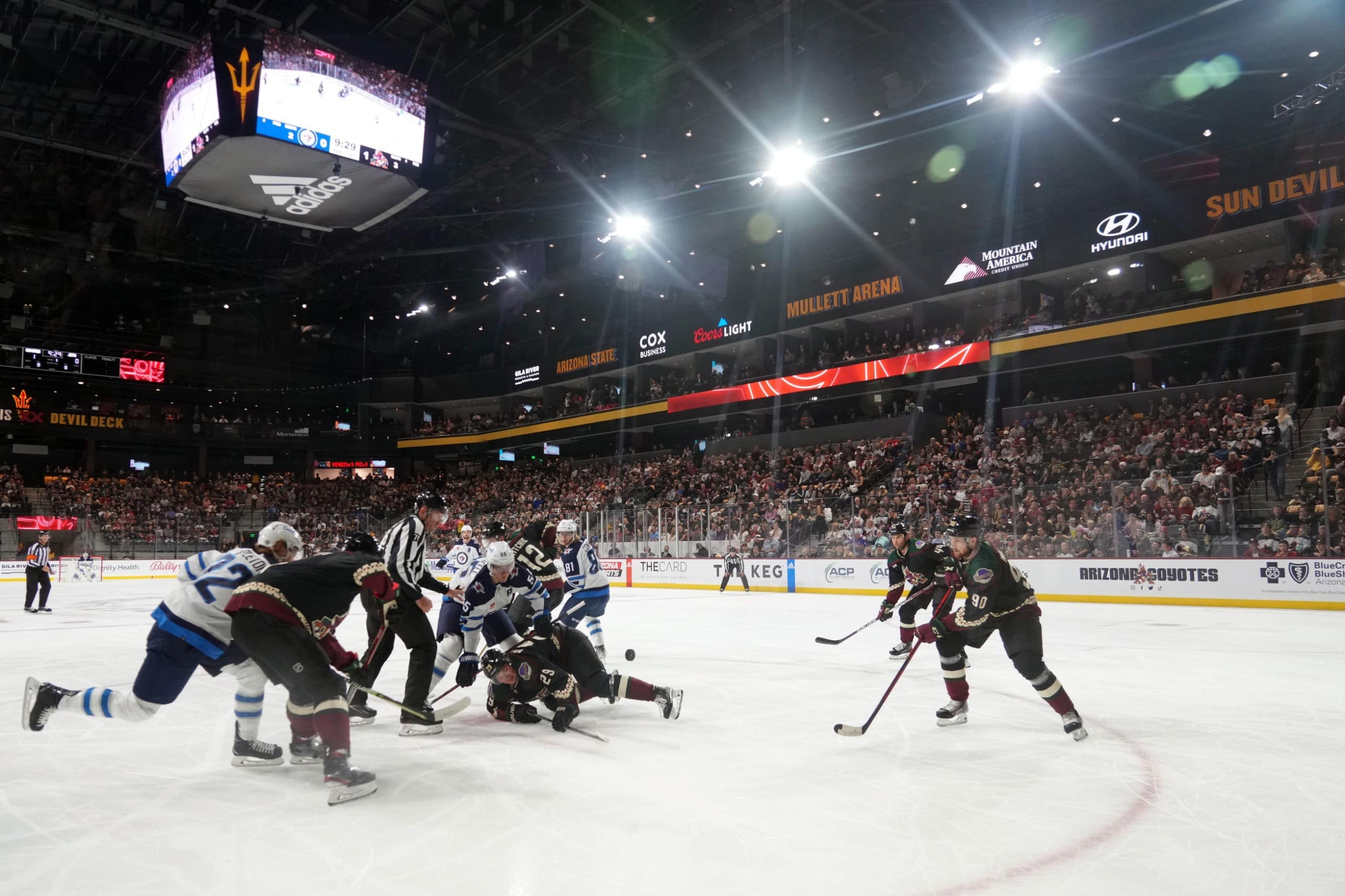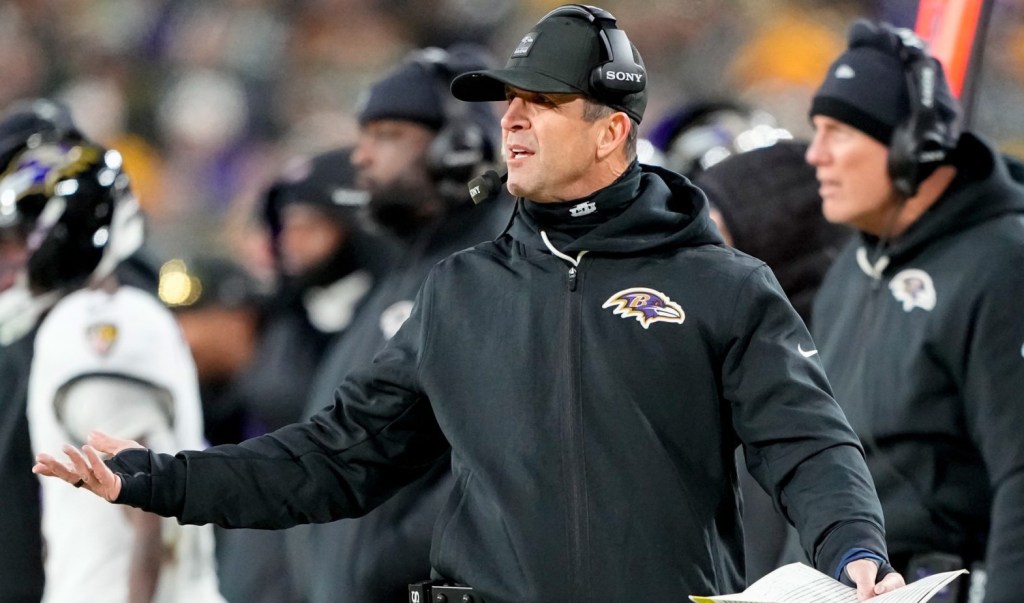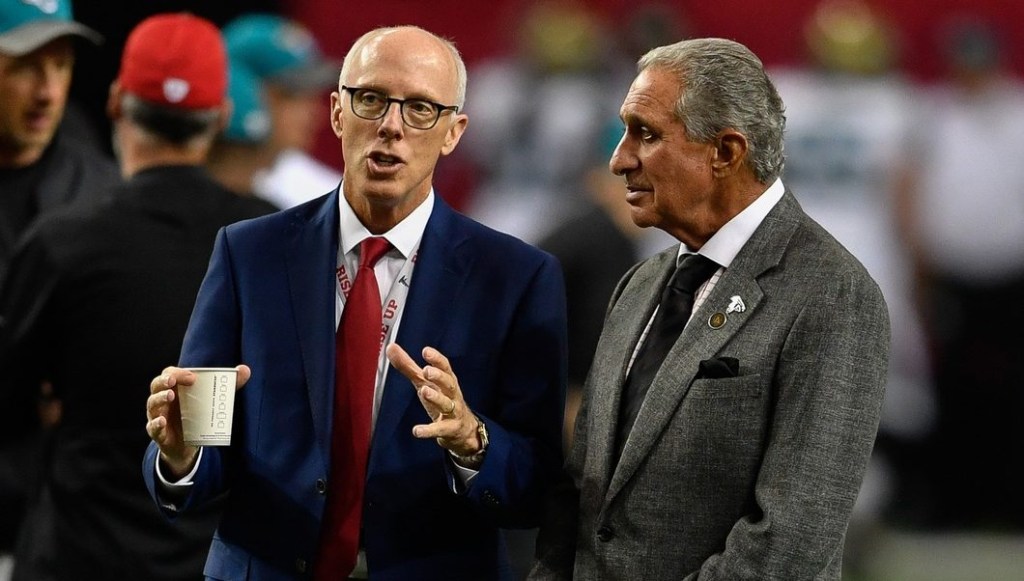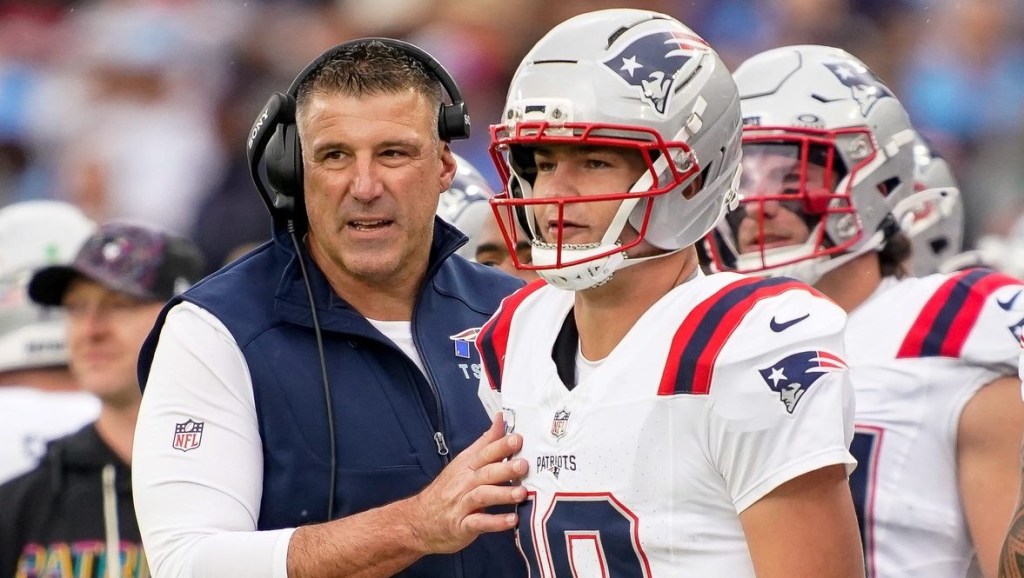TEMPE, AZ — There were free mullets, somewhat long waits for the restrooms between periods and, more importantly, the Arizona Coyotes freed from the edges of suburbia where the franchise languished for nearly two decades.
On Friday, the Coyotes made their debut at Arizona State’s new 5,000-seat Mullett Arena, a venue named after hand-washing tycoon and ASU benefactor Donze Mullett and his wife, Barbara.
It was never meant to house an NHL team — and that was clear by the visiting locker room that the Winnipeg Jets broke in.
“The ground is cold being on top of the ice,” Jets forward Cole Perfetti said with a smirk after his team’s 3-2 OT victory. “If you take your shoes off, it’s a little chilly on the feet. But, you know, it’s temporary.”
The setup for the visiting teams for the first few games is atop a community ice rink. An annex that includes a new dressing room for the road squads is slated to be completed in December — built with part of the $30 million the team has spent on facilities since deciding to exit Glendale.
Mullett Arena will be the new home of the Coyotes for at least the next three seasons, an intermediary step toward a $2.1 billion arena and entertainment district about a mile-and-a-half from here.
“This is actually a hockey town,” Coyotes president and CEO Xavier Gutierrez told Front Office Sports. “I think the challenge has been that the organization has lacked credibility over the years. There’s been some decisions that have certainly undermined the financial stability of the organization.”
Escaping To and From Glendale
Looking back, the first domino was moving far away from downtown Phoenix, where the Coyotes shared the Footprint Center with the Suns in 2003.
- In 2009, trucking tycoon Jerry Moyes placed the Coyotes in bankruptcy. A judge rejected a bid by Jim Balsillie, the co-founder of the company behind the Blackberry who sought to move the franchise to Hamilton, Ontario.
- The NHL took over control of the team until 2013 after its total bid of $140 million was approved by the judge.
- The IceArizona ownership group purchased the Coyotes for $170 million in 2013.
- In 2017, hedge fund manager Andrew Barroway became the sole owner of the franchise.
- Billionaire Cuban American Alex Meruelo purchased the Coyotes in 2019 for about $300 million.
Through all that, the battles between the team and the city of Glendale — which owns the Coyotes’ former home now known as Desert Diamond Arena — continued. In 2015, just two years after it was signed, the 15-year lease in Glendale was renegotiated and became a year-to-year agreement, which wasn’t without its issues, either.
The team continued to lose money as fan apathy set in — largely due to the team making the playoffs once over the last decade.
But the Coyotes are finally in Tempe — six years after a deal to build a new home near the ASU campus fell apart. They are sharing the rink with ASU — the first time an NHL team has done so with a college team since the Boston Bruins played at Boston University from 1924-28.
And there have been jokes about the setup. But fans, celebrity or otherwise, seemed to have appreciated the experience.
“I thought it’d be fun to check out the little arena,” said actor Frankie Muniz, a resident of nearby Scottsdale and a longtime Coyotes fan. “I hope [this works]. I don’t want to see the Coyotes go. I used to be a fan of every sport. Now I see myself just watching hockey and I love to come to the games.”
Sam Frazier, an Army veteran studying German at ASU, enjoyed the game and the drive to it.
“Oh, yeah, brother,” Frazier said as he relived the team’s Glendale days. “It was a haul. Man, it was a haul. But this is freakin’ amazing. The valley deserves this.”
Cost of Downsizing
This place is actually small, not just because seats are covered up to reduce capacity. As a result, seats aren’t cheap.
The average announced attendance for the 2021-22 season in Glendale (17,100 seats) was around 11,000, but Gutierrez said the tickets sold were “closer to 9,000” with an average price of about $40 per seat.
“We are going to do more ticket revenue than last year,” said Gutierrez, the first Latino to hold the role of team president in NHL history.
- There are 4,400 sellable seats for the Coyotes after taking into account the roughly 400-seat ASU student section — where seats cost $25-$50 — and other gratis tickets for players, their families, and league partners.
- About half the sellable seats have been purchased by season ticket holders.
- The average ticket price is $170, the highest in the league.
But Gutierrez put that price into perspective.
“This is the lower half of the lower bowl [at most NHL arenas],” he said “You’re no more than 13 rows off the ice. So, when you’re talking about the price point for those kinds of seats across the NHL, we are right there at the average.”
The Coyotes also have the highest average resale price in the league at $249, according to data provided by SeatGeek.
The Chargers saw a similar bump after their final season in San Diego (2016) at the 70,500-seat Qualcomm Stadium and first season in the 27,000-seat StubHub Center, when the average ticket cost $201, a 65% jump.
One major drawback of Mullett is having only 22 suites, and the sellable inventory is just 19 with two suites held by the Coyotes and another for ASU.
“The shortfall comes in premium revenue,” Gutierrez said. “When you are talking about corporate partnerships, we are hopeful this homestand will show them what we have to offer from an in-game experience. That’s one area where we think we have a lot of upside.”
‘A Temporary Solution’
The Coyotes logo shares center ice with ASU’s. Most of the permanent reminders around the venue are all Sun Devils-related.
This is a college rink that is half the size of the University of Minnesota’s 3M Arena at Mariucci, where Coyotes center Nick Bjugstad played.
“Similar colors, maroon and gold, so that’s familiar,” Bjugstad quipped. “Being in a tighter, intimate environment brings a little more noise and a little more intensity in the arena.”
The novelty will wear off, but it looks favorable that a new, larger state-of-the-art arena will come to fruition.
“We aren’t trying to mischaracterize things,” Gutierrez said. “This is a temporary solution that’s allowed us to stay in the market.”

















